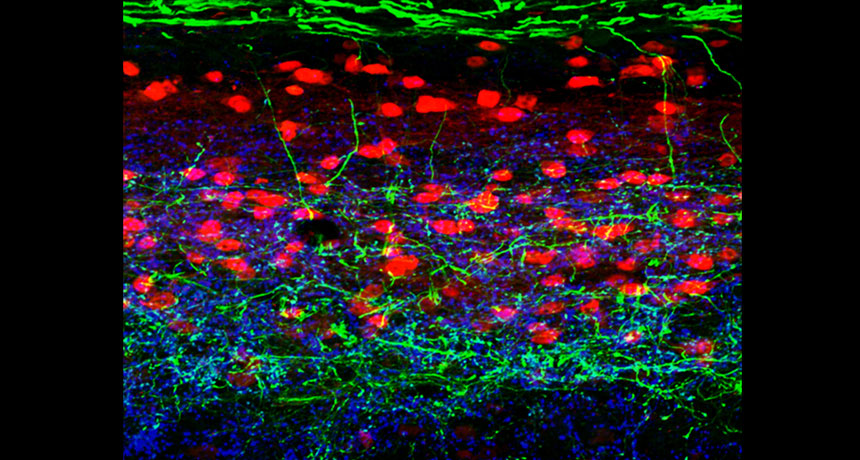Itch-busting nerve cells could block urge to scratch
Mice studies show how brain deals with irritation of light touch on hairy skin

UP TO SCRATCH A group of nerve cells in the spinal cord of a mouse (red) curb mechanical itch, a new study suggests.
Salk Institute